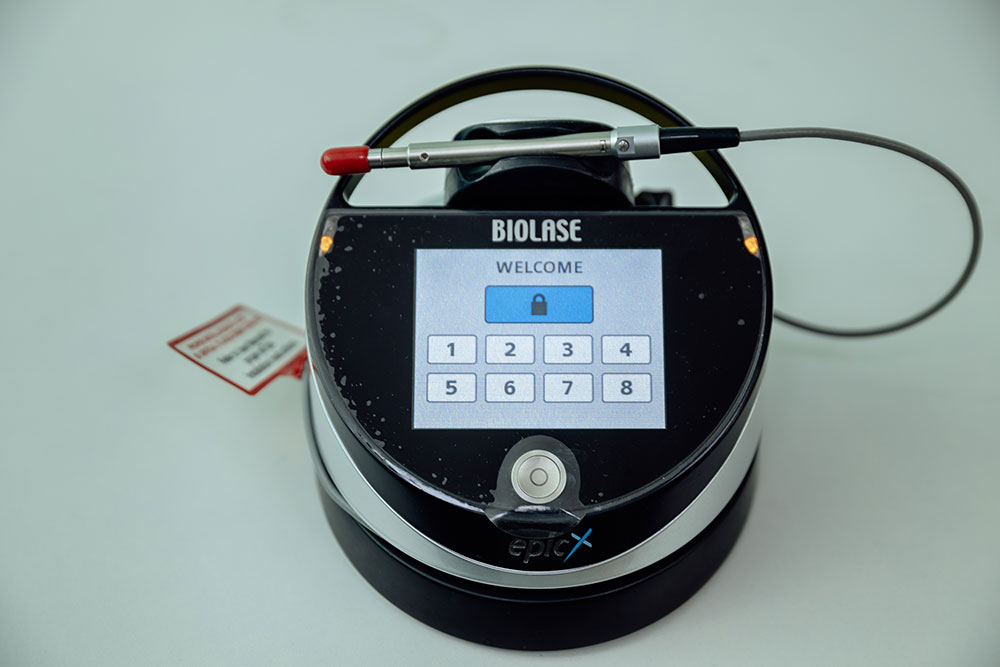Soft tissue laser therapy
Laser soft tissue therapy is becoming increasingly common in dentistry today due to the numerous possibilities it offers.
Thanks to its multiple applications and the many benefits it provides, the laser is suitable for various interventions in oral surgery and endodontics. It is also useful in the treatment of bacterial infections, but also as a support in periodontology.
Advantages of using lasers in dentistry
The laser is widely used in dentistry and has practically no harmful effects. Therefore, it can also be used in children.
Laser therapy of soft tissues involves several interventions:
- modeling of soft tissues;
- all types of cuts;
- biopsy;
- exposure (revealing) of implants;
- auxiliary periodontal therapy;
- treatment of canker sores, herpes, etc.
It is possible to successfully model soft tissues with a laser because, in this way, the most precise cuts and delicate work are achieved. Compared to conventional oral surgical interventions, the surrounding tissue is significantly less damaged.
By using lasers, complications common to standard methods are avoided. Thereby, for example, if the laser is used for surgical purposes, there is no use of floss (which can lead to the accumulation of dental plaque and thus complicate the wound healing process).
One of the biggest advantages of laser soft tissue therapy is the absence of pain during most interventions and the patient’s easy recovery and quick return to daily activities.
Furthermore, the laser encourages coagulation, which means that there is no bleeding like during classic oral surgical interventions. This enables better visibility for the dentist, greater precision in work, and more enviable results.
In addition to the above, soft tissue laser therapy is an effective protection against infection, the healing process is rapid, and the swelling or pain that may occur after the intervention is insignificant.

Soft tissues Laser therapy in Endodontics
Endodontic dental treatment refers to the treatment of the inside of the tooth, more precisely, the place where the pulp (dental nerve) is located.
Root canal treatment (dental nerve extraction) is one of the least popular dental interventions. What is the reason for this?
Anatomically speaking, each tooth has root canals that can be narrow, curved, and inaccessible. The solutions and brushes used to clean the tooth root canal often cannot reach all parts and the top of the tooth root (apex). As a consequence, repeated inflammatory processes occur.
For the inflammation to be completely removed, the laser penetrates the small side canals and successfully neutralizes the pathogenic microorganisms that caused the inflammation. Laser therapy of soft tissues simultaneously prevents the recurrence of infection, which eliminates the need for subsequent antibiotic therapy.
Soft tissue laser therapy – The treatment of periodontitis
After caries, periodontopathy is the most common dental disease. It is a serious and progressive disease of the periodontium (the supporting apparatus of the teeth), which leads to tooth loss if not treated.
Some of the factors that cause periodontitis are solid deposits on the teeth (plaque), bacteria caused by poor oral hygiene, smoking, alcohol, bad eating habits, genetic inheritance, various diseases, etc.
Having in mind that the mouth normally contains a large number of bacteria, it is important to emphasize that they can be dangerous to oral health. Thus, it is important to reduce them by maintaining proper hygiene of the oral cavity and teeth.
Considering those pathogens that cannot be eliminated by hygienic measures and the use of medication, it is necessary to apply laser therapy because it is the only one that has proven to be effective under the given circumstances.
